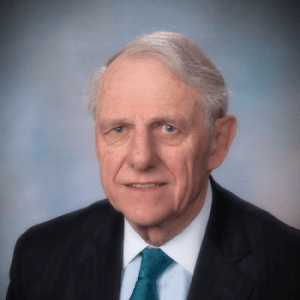International aggression as a domestic crime

Earlier this month, the Director of the Centre lodged a submission to the NZ Parliament on the International Crimes and International Criminal Court Amendment Bill.
The Bill proposes amendments to NZ legislation to incorporate certain international amendments made in 2010 and 2017 to the Rome Statute (Art. 8) dealing with war crimes.
The submission endorsed the Bill, insofar as it dealt with the war-crime amendments. But it recommended that the Bill should “include the other principal amendment outstanding, namely pertaining to the crime of aggression, which is one of the Statute’s four ‘most serious crimes of concern to the international community’.”
This blog-post supports this proposal – namely, NZ ratification of the Kampala Amendments dealing with the crime of aggression, and the inclusion of aggression as a domestic crime in the draft legislation currently before Parliament.
Let me explain why.
International work on aggression as a crime
The Assembly of States Parties of the International Criminal Court (ICC) decided by consensus, in New York on 14 December 2017, to activate the Court’s jurisdiction over the crime of aggression, along the lines of the definition agreed upon, also by consensus, at the Kampala Review Conference in 2010.
Activation was effective from 17 July 2018, the 20th anniversary of the Rome Statute. From that date on, the UN Security Council can refer cases of aggression to the Court, and the Court Prosecutor or another State Party can refer cases in certain situations – typically when both the aggressor State and the victim State have ratified the amendments.
I was honoured to be in Rome, and in Kampala, and again in New York, as part of the Samoa delegation. Samoa has ratified all the Kampala Amendments, and adopted legislation to give effect to them under domestic law.
In Rome in 1998, aggression was half-in and half-out of the jurisdiction of the ICC. It was listed as one of the four crimes over which the Court has subject-matter jurisdiction. But two challenging issues (definition of the crime and the conditions for the exercise of jurisdiction) required further work.
That work was subsequently carried out through the Court’s Special Working Group on the Crime of Aggression and concluded in Kampala. But success came with delaying procedural conditions, namely a requirement of 30 ratifications and a further ‘activation’ resolution no sooner than 2017.
The 30 ratifications (now 39) and the activation resolution have now been achieved. Ratification by more States will help solidify the structure of international law as promised in Rome – and before that, in Nuremberg and Tokyo.
NZ on the crime of aggression
As a relatively small state whose main protection in an often ugly world is the rule of law, New Zealand has a stake in helping to embed the proscription of the crime of aggression in that piece of the architecture of international law represented by the ICC.
New Zealand has a history of involvement with the crime.
- Prime Minister Massey was a member in Versailles of the Commission on the Responsibility of the Authors of the War (1919) that considered the criminal responsibility of the Kaiser.
- New Zealand was one of the 18 States, in addition to the four major signatories, adhering to the London Agreement setting up the Nuremberg Tribunal (1945).
- It provided one of the eleven judges for the Tokyo proceedings against the Japanese leadership (1946); ‘crimes against peace, or ‘aggression’, were prosecuted in both Nuremberg and Tokyo.
More recently, New Zealand participated actively in the Special Working Group of the ICC on Aggression (2002-09) which paved the way for Kampala. And it joined the consensus both in Kampala and in 2017 at the ASP in New York. New York’s consensus included a renewal of the Assembly of States Parties’ call for all parties which have not yet done so to ratify the amendments on aggression.
In a statement made early in the morning after adoption, the NZ delegate “welcome[d] the activation of the Kampala amendments.” She then explained that
“New Zealand’s treaty processes require Cabinet approval, Parliamentary treaty examination and the enactment of any necessary implementing legislation before New Zealand can be bound by a multilateral treaty or amendment.”
As a good international citizen and friend of the Court, it is time for New Zealand to go beyond merely ‘welcoming’. Time to join the 39 others who have ratified, including Argentina, Austria, Belgium, Germany, Liechtenstein, The Netherlands, Switzerland, Samoa, and Trinidad & Tobago.
In 2016 in a lecture at the Parliament Theatrette,[1] I offered some thoughts about legislating the crime domestically, in the context of Kennedy Graham’s thoughtful 2013 International Non-Aggression and Lawful Use of Force Bill. I shall not traverse, here, all the points I made there about the necessary legislation.
Dr. Graham’s Bill is still a good starting-point in drafting legislation. The bottom line is that, under NZ constitutional practice, a statute is necessary to penalize the crime as defined in the Kampala Amendments.
It would be unthinkable for New Zealand to become a party to the Amendments without making the crime punishable in domestic law. New Zealand’s leaders are, one hopes, no more likely to commit aggression than to commit genocide, war crimes or crimes against humanity – the other crimes within the jurisdiction of the ICC. But it is important to put a statement to that effect on the international record, by legislating and ratifying.
The Rome Statute is not a ‘suppression convention’ like the terrorism treaties and others explicitly requiring states to criminalize; but that they should do so is implicit in the Statute, in particular its provisions on ‘complementarity’ which indicate that States should exercise priority in prosecution. Thoughtful states, including New Zealand and Samoa, have made the other crimes in the Statute criminal and prosecutable under domestic law by granting appropriate jurisdiction to local courts.
In terms of criminal law theory, strong arguments for so doing come from the deterrent and the expressive views of the law – emphatically spelling out, for a domestic and international audience, the illegality of aggression and the other crimes.
Universal jurisdiction
New Zealand and Samoa have claimed universal jurisdiction for the other Rome crimes; and Samoa has added aggression to its list of crimes over which it exercises universal jurisdiction.
Samoa’s universal jurisdiction is, however, the moderate form which applies if the alleged aggressor is, after the commission of the offence, present in Samoa. Since universal jurisdiction may be controversial in respect of the crime of aggression, I add a few thoughts on jurisdictional issues.
No-one suggests that it is improper for a State to exercise jurisdiction over what its own leadership does (at home or abroad), that is to say ‘aggressor state jurisdiction’, based on territoriality or the nationality of its leadership. The International Law Commission (ILC), however, recommended against universal or victim state jurisdiction for aggression in its Code of Crimes against the Peace and Security of Mankind.
There is debate whether aggression, as opposed say to genocide, gives rise to universal jurisdiction under international customary law, even though it was adjudicated in international forums in Nuremberg and Tokyo. My impression was that most members of the SWGCA were comfortable at least with victim state (‘effects’ or ‘objective territorial’ jurisdiction), which was espoused in Dr. Graham’s Bill. But practice is somewhat thin, and one of a batch of ‘Understandings’ adopted in Kampala mildly discourages what it calls the exercise of “domestic jurisdiction with respect to an act of aggression committed by another State.”
I certainly do not read the Kampala Understandings, the weight of which is debated, or customary law, as clearly prohibiting victim state or universal jurisdiction as a matter of law. In fact, a recent study of the work-product of the first twelve States to legislate on the crime of aggression[2] since Kampala indicates that all twelve of them have adopted both aggressor-state and victim-state jurisdiction. Four of them, Austria, Samoa, Luxembourg and North Macedonia, appear to have some form of universal jurisdiction. This practice suggest that New Zealand has choices. Personal jurisdiction, then, is an issue to be decided.
Conclusion
Now is the time to forge ahead with the necessary legislation leading to ratification and resolve issues such as those on jurisdiction.
New Zealand can then join the ranks of State Parties to the Rome Statute which are bound among themselves to apply Kampala.
Roger Clark is professor of law at Rutgers University (Camden, NJ). A former NZ university lecturer and diplomat, he has contributed extensively to the advancement of international law in many areas, including nuclear disarmament and international criminal law. He is a member of the Centre’s International Advisory Panel.
[1] “Making Aggression a Leadership Crime in 2017: The Rome Statute and the Kampala Amendments”, NZCGS, Visiting Lecture, 2016.
[2] Annegret Hartig, “Post Kampala: The Early Implementers of the Crime of Aggression 17 Journal of International Criminal Justice (2019) 485. (Not all countries are as diligent in legislating before ratification as New Zealand is, and many of the 39 ratifiers have not yet adopted their legislation.)





